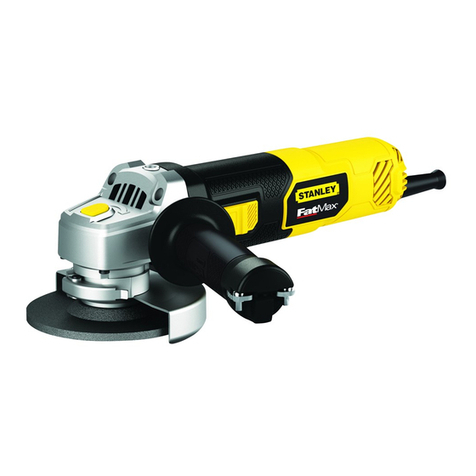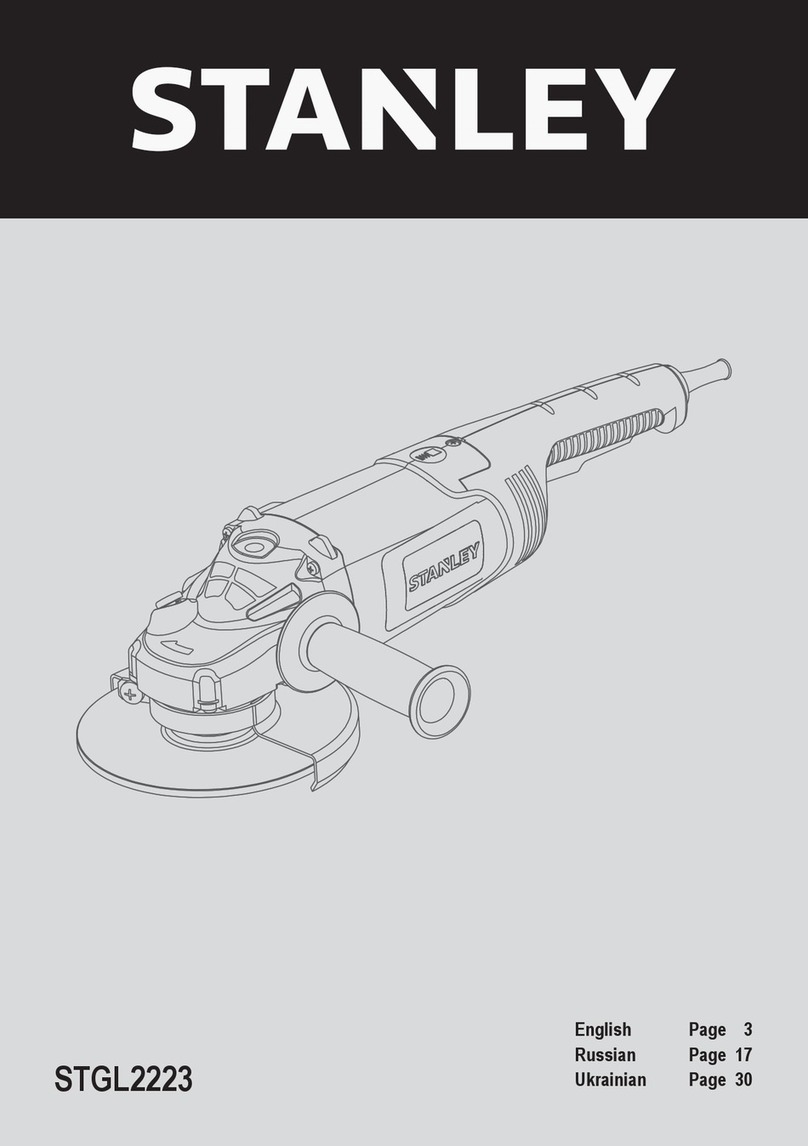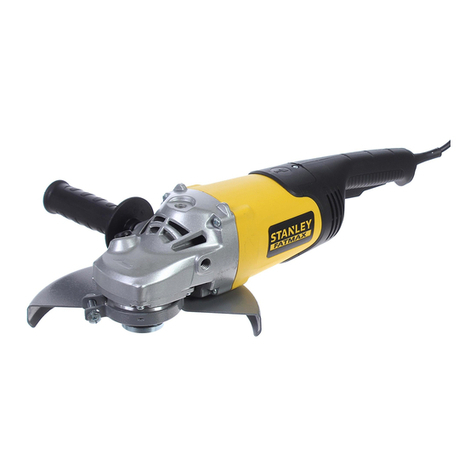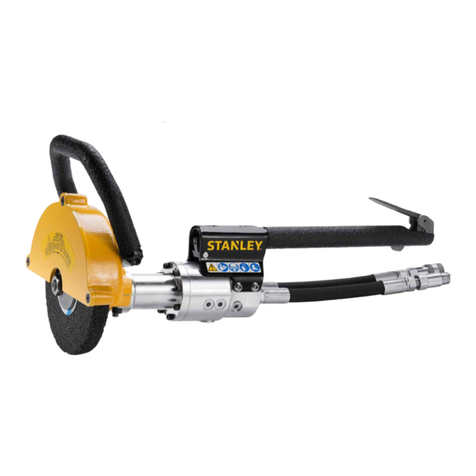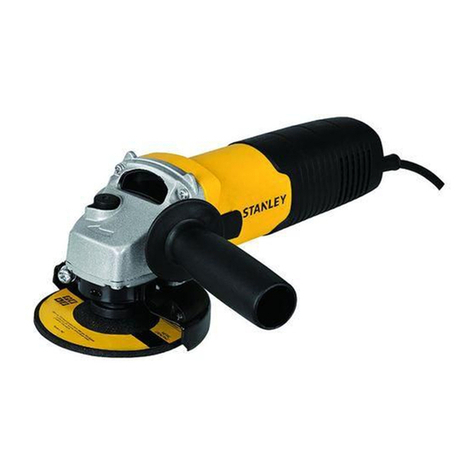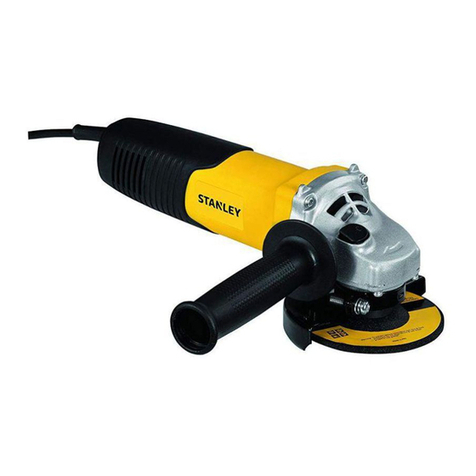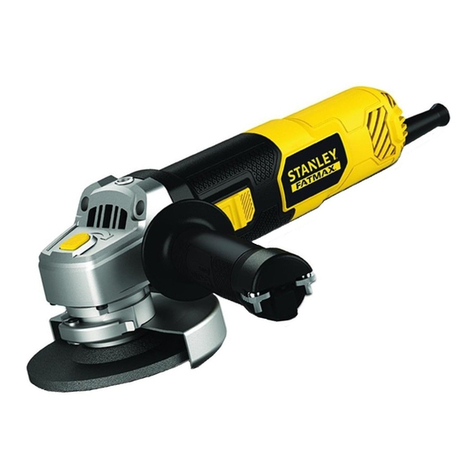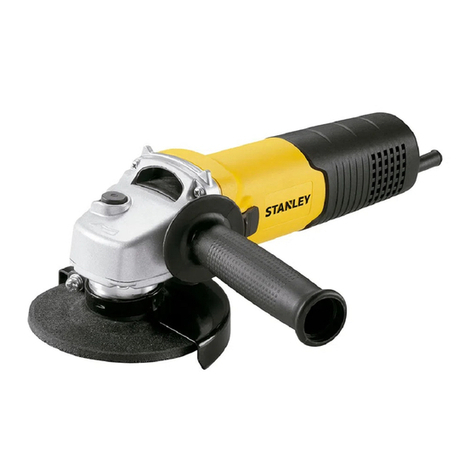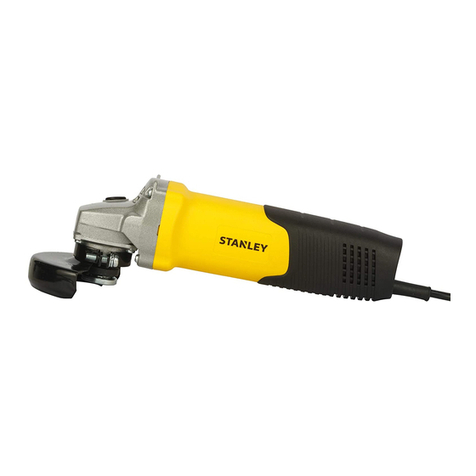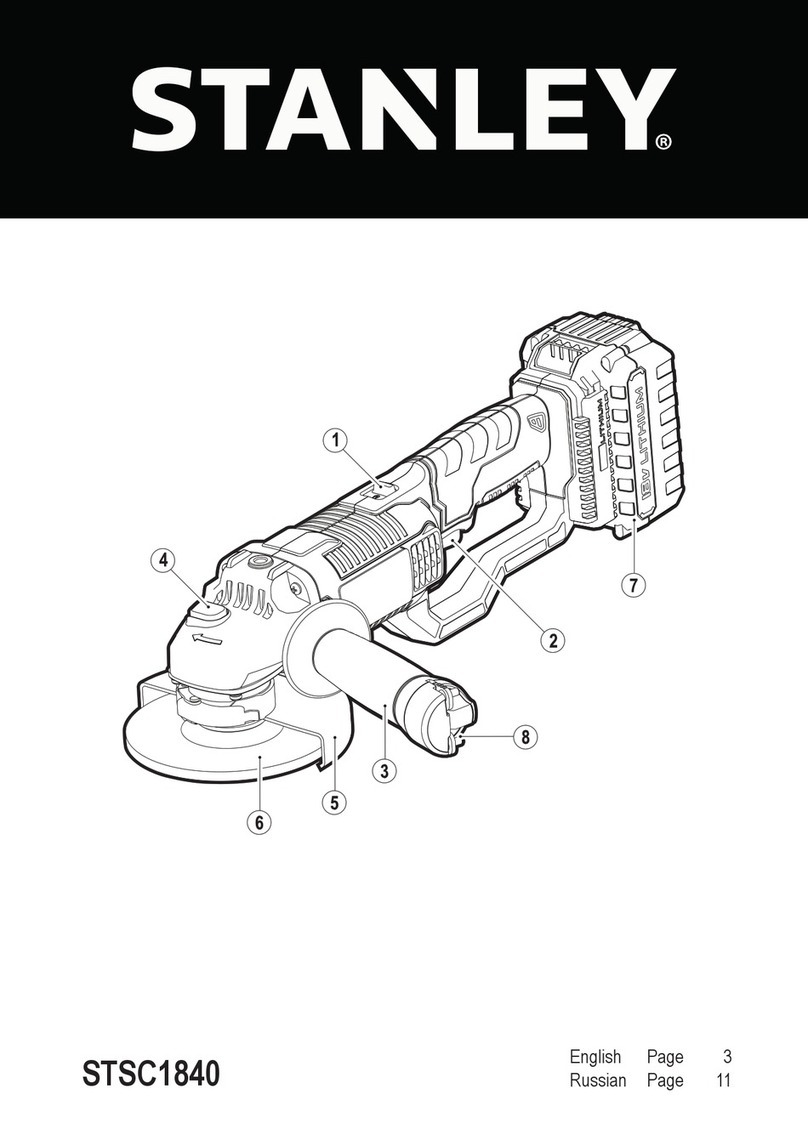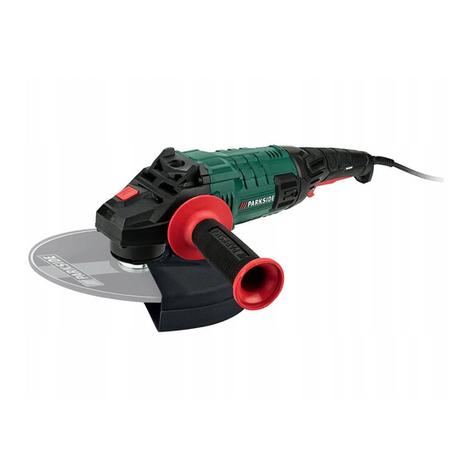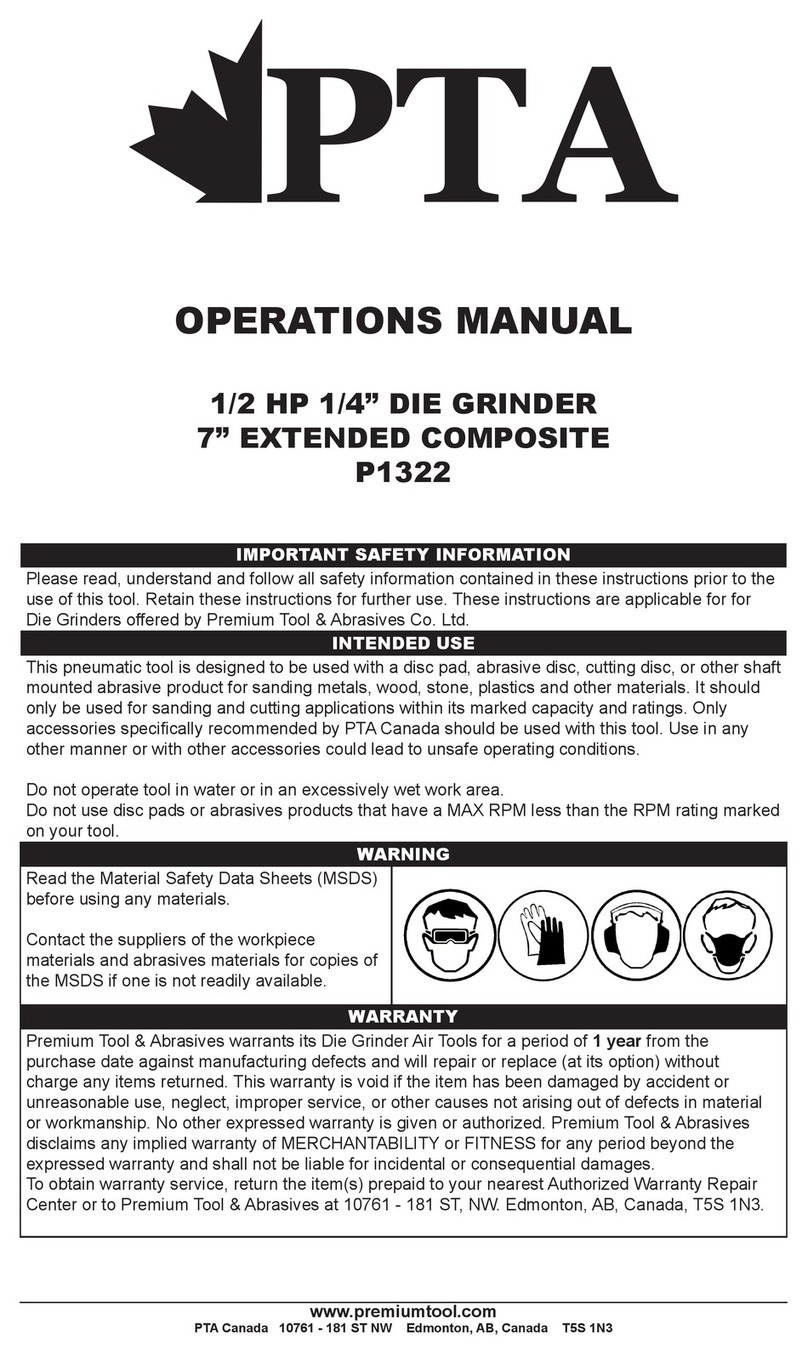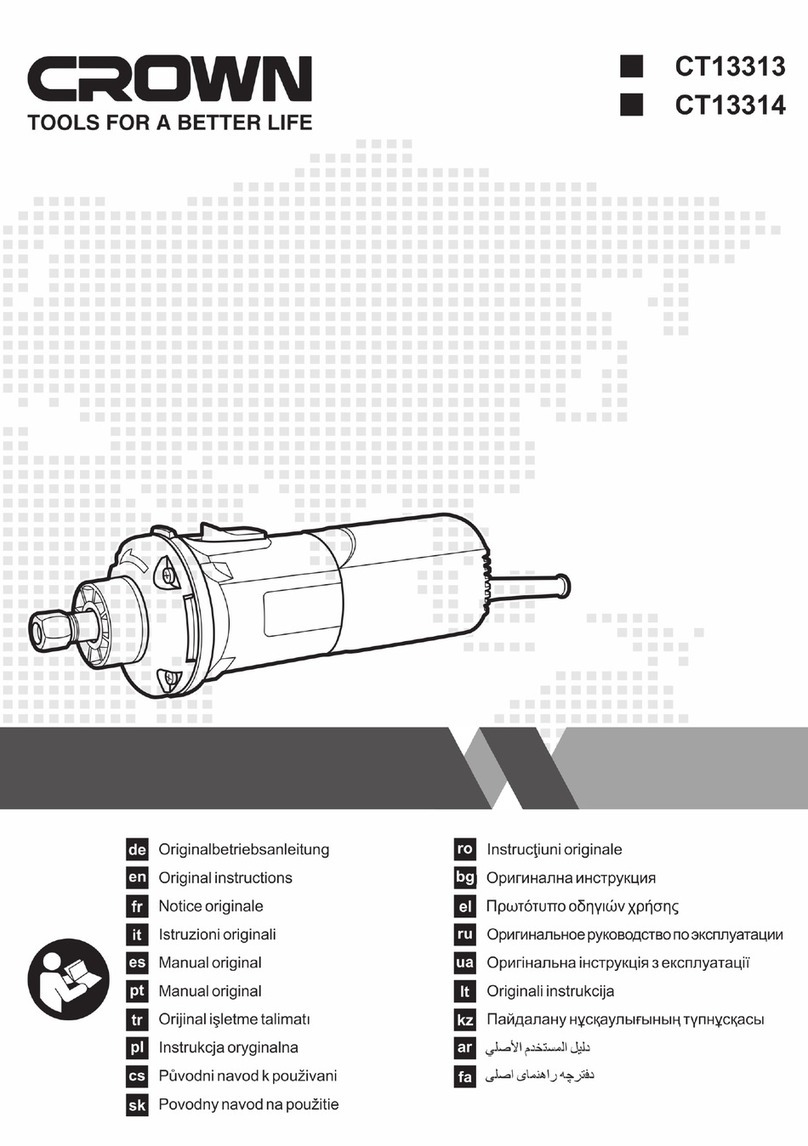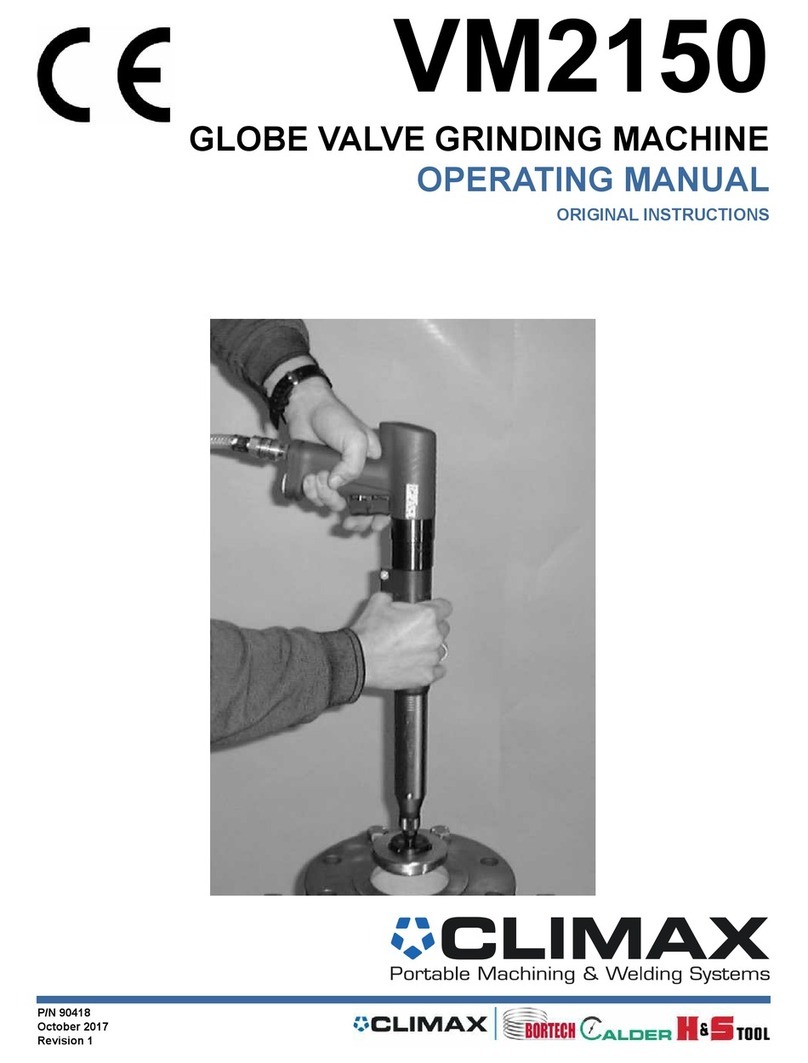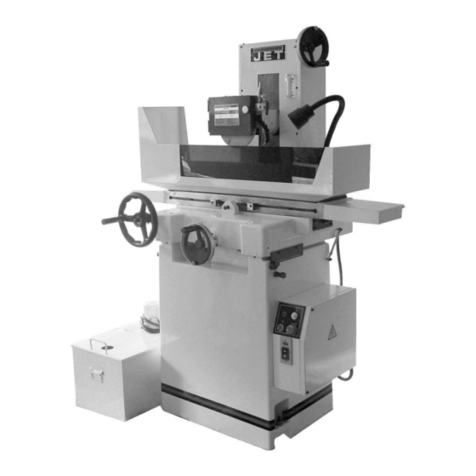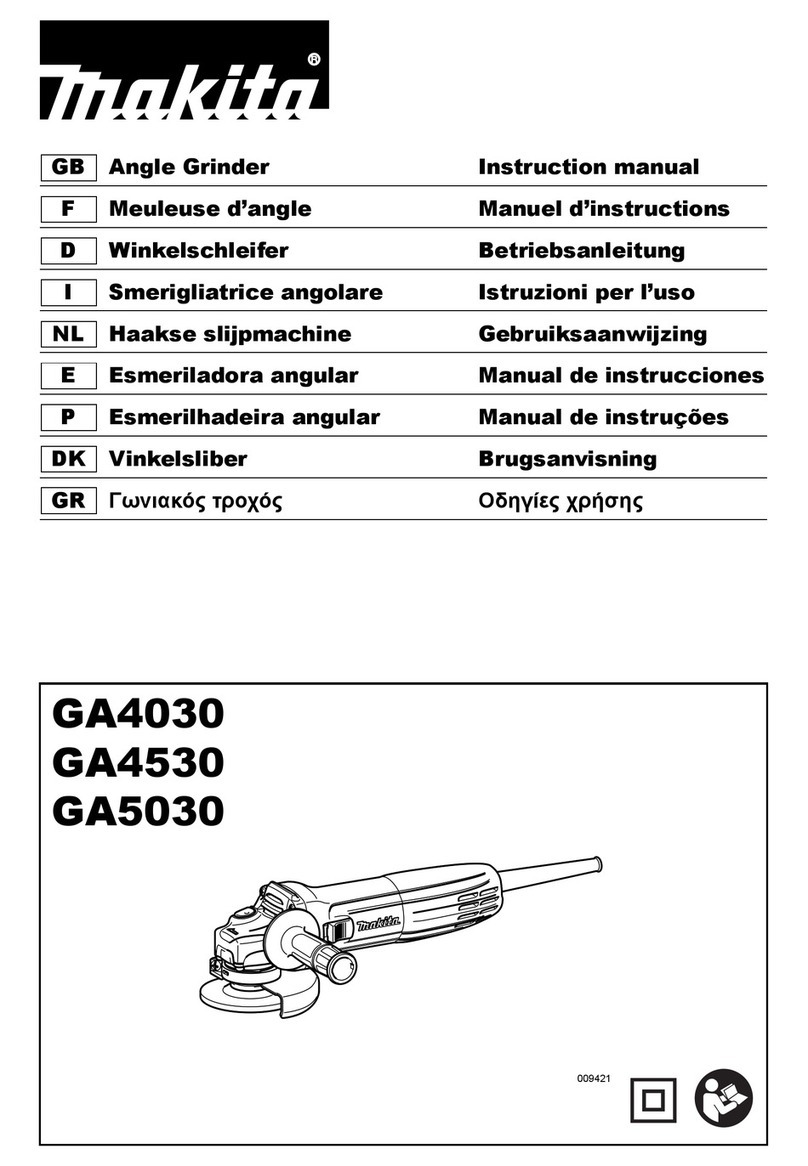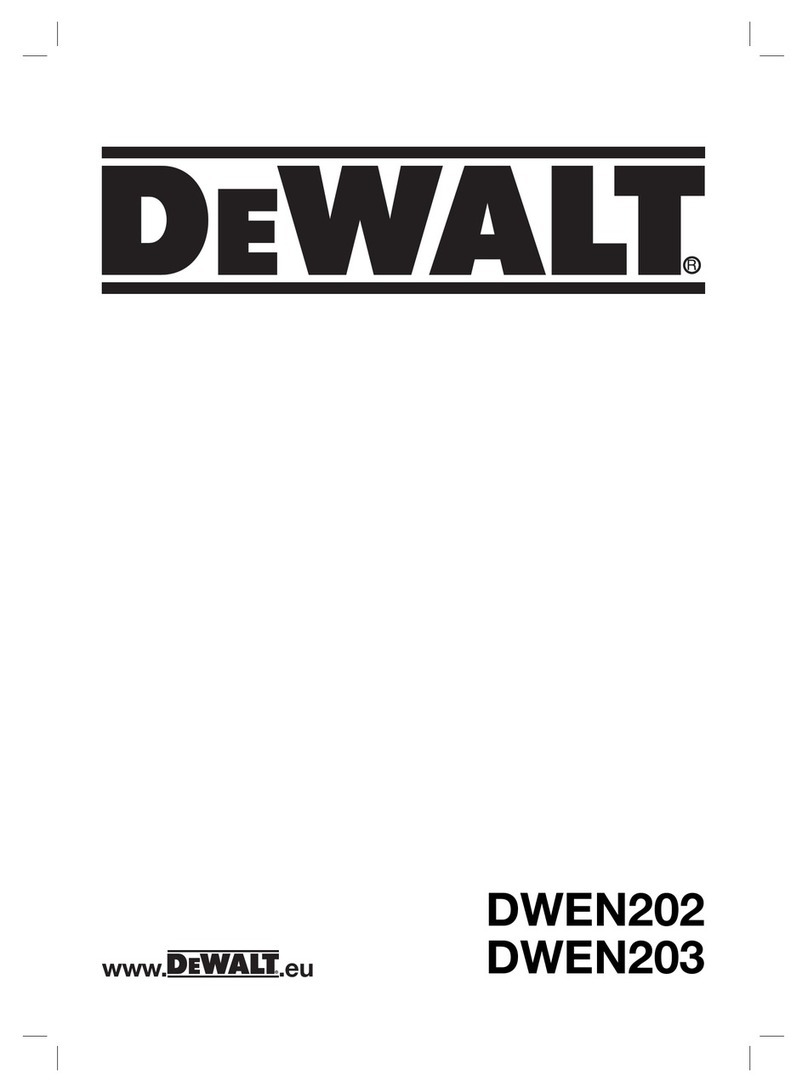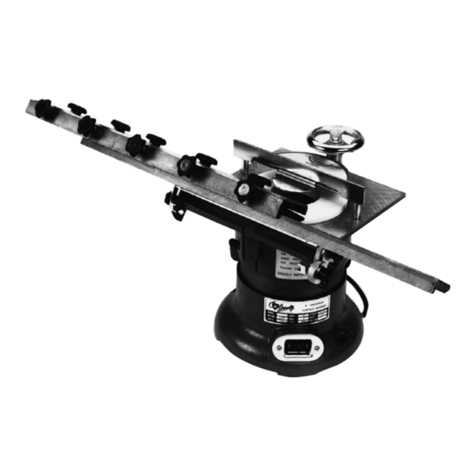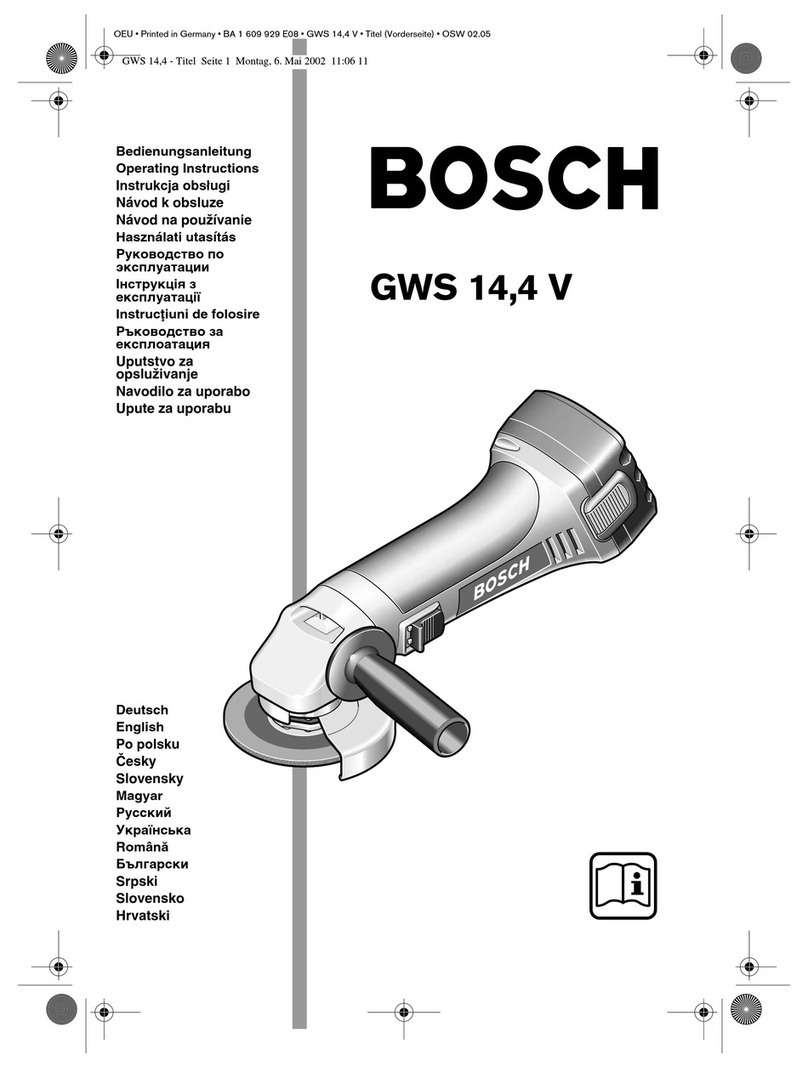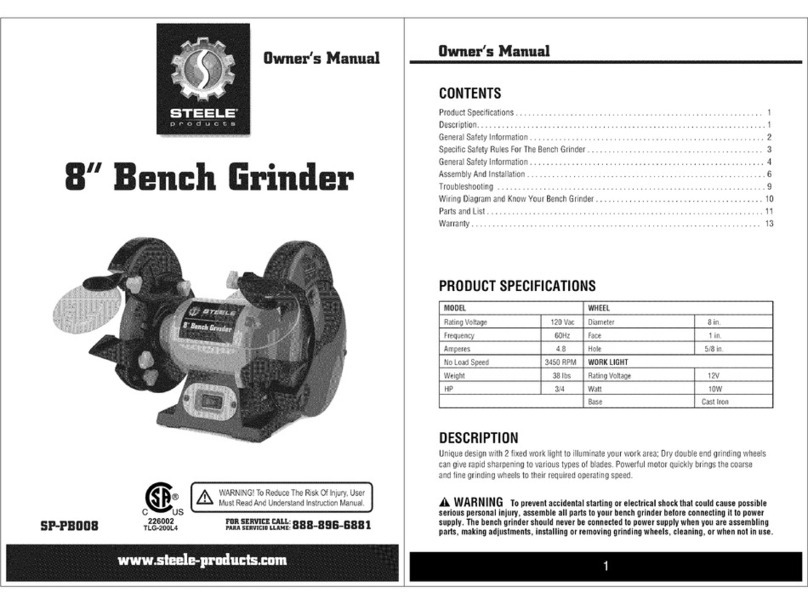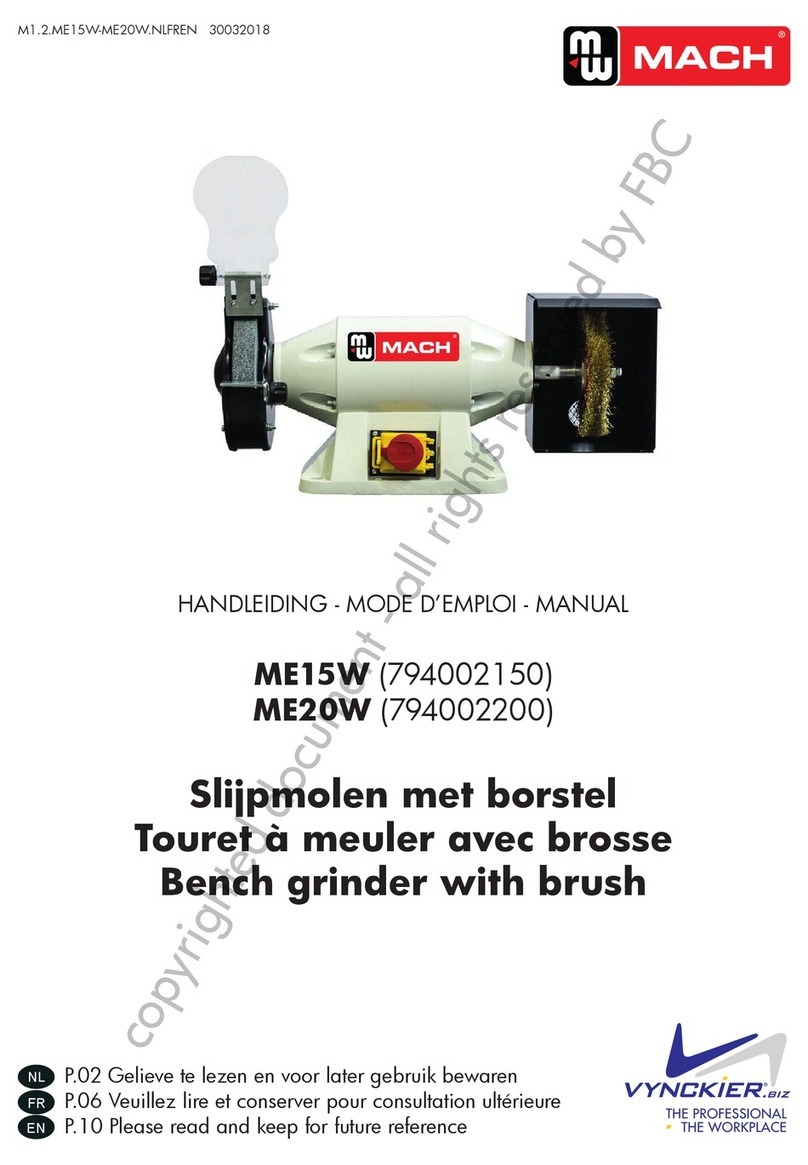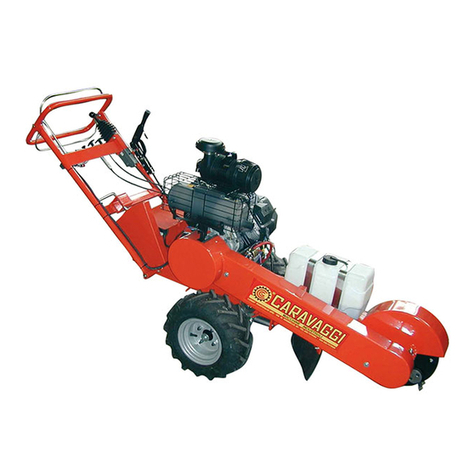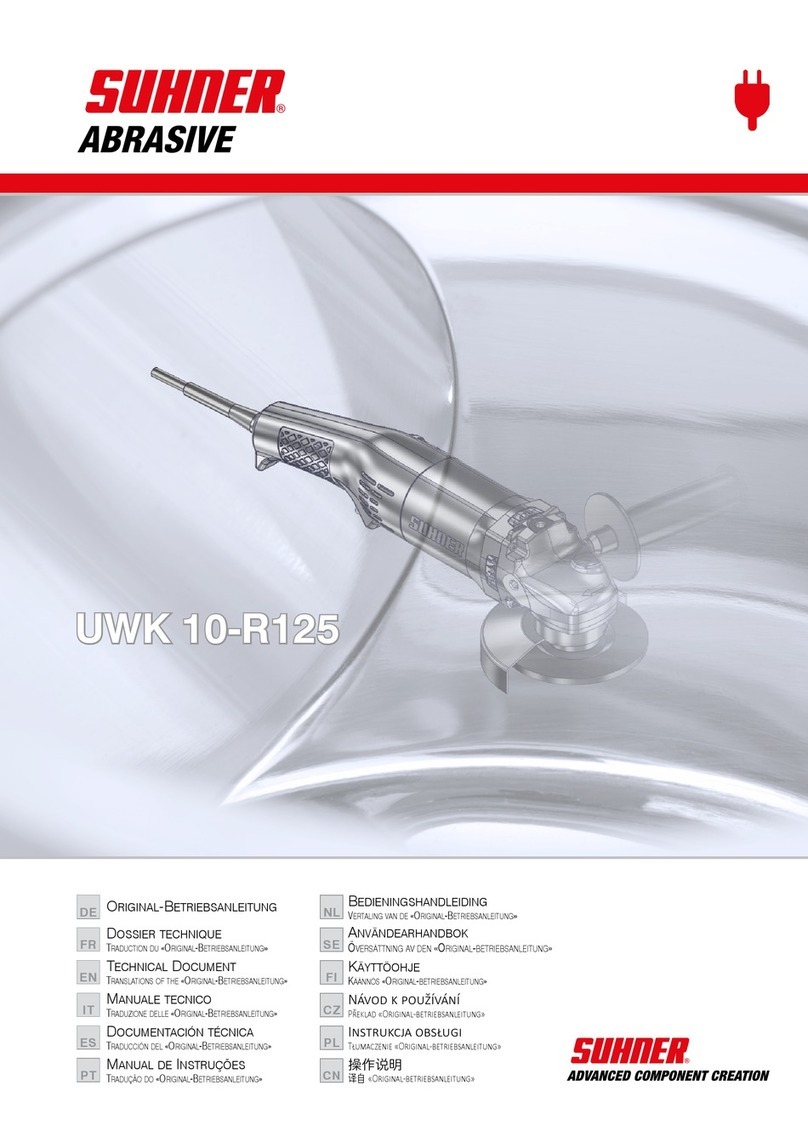
GR30 User Manual ◄ 5
SAFETY PRECAUTIONS
• Operator must start in a work area without
bystanders. The operator must be familiar with all
prohibited work areas such as excessive slopes and
dangerous terrain conditions.
• Establish a training program for all operators to
ensure safe operation.
• Do not operate this tool without rst reading this
manual.
• Operators and maintenance personnel shall be able
to physically handle the bulk, weight and power of
the tool.
• Slips, trips and falls are major causes of workplace
injury. Be aware of slippery surfaces caused by the
use of the tool and also of trip hazards caused by
the hydraulic hose.
• Do not operate the tool unless thoroughly trained or
under the supervision of an instructor.
• Always wear safety equipment such as goggles,
gloves, safety shoes, ear, breathing and head
protection at all times when operating the tool.
• Do not inspect, clean, change accessories or
perform maintenance on the tool while the hydraulic
power source is connected. Accidental engagement
of the tool can cause serious injury.
• Always connect hoses to the tool hose couplers
before energizing the hydraulic power source. Be
sure all hose connections are tight.
• Do not operate the tool at oil temperatures above
140 °F/60 °C. High temperatures can cause operator
discomfort and may damage to the tool.
• During use, the operator should adopt a comfortable
posture while maintaining secure footing and
avoiding awkward or o-balance postures. Change
postures during extended tasks to help avoid
discomfort and fatigue.
• When using a grinding tool to perform work related
activities, the operator can experience discomfort in
the hands, arms, shoulders, neck or other parts of
the body.
• If you experience numbness, tingling, pain or
whitening of the skin in your ngers or hands, stop
using the tool. Tell your employer and consult a
physician.
• Check for vibration level before each service. If you
feel a higher than normal vibration, contact your
STANLEY dealer for repair.
• Do not operate a damaged, improperly adjusted or
incompletely assembled tool.
• To avoid personal injury or equipment damage,
all tool repair, maintenance and service must be
performed by authorized and properly trained
personnel.
• Always replace parts with replacement parts
recommended by STANLEY.
• Use only lubricants recommended by STANLEY.
• Check fastener tightness often and before each use
daily.
• Do not tighten or loosen the wheel nut by impact.
Hold the shaft with a second wrench on the ats,
behind the wheel, and tighten securely.
• Do not overreach. Maintain proper footing and
balance at all times.
• Always hold the tool with both hands when the unit
is running. Use a rm grip.
• Keep all parts of your body away from the rotating
wheel.
• Do not wear loose clothing or unbound long hair
when operating the tool. Loose items can become
entangled with the tool and cause serious injury.
• Supply hoses must have a minimum working
pressure rating of 2500 psi/175 bar.
• The hydraulic circuit control valve must be in the
“OFF” position when coupling or uncoupling the tool.
Wipe all couplers clear before connecting. Failure to
do so may result in damage to the quick couplers
and cause overheating. Use only lint-free cloths.
• Do not exceed the rated limits of the tool or use the
tool for applications beyond it’s design capacity.
• Always keep critical tool markings, such as labels
and warning stickers, legible.
• WARNING: Some dust created by power sanding,
sawing, grinding, drilling, and other construction
activities contains chemicals known to the State
of California to cause cancer, birth defects or
other reproductive harm. Some examples of these
chemicals are:
• Lead from lead-based paints,
• crystalline silica from bricks and cement
and other masonry products, and
• arsenic and chromium from chemically-
treated lumber.
Your risk from these exposures varies, depending
on how often you do this type of work. To reduce
your exposure to these chemicals: work in a well
ventilated area, and work with approved safety
equipment, such as those dust masks that are


